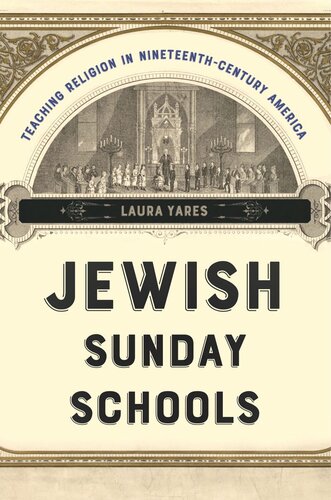

Most ebook files are in PDF format, so you can easily read them using various software such as Foxit Reader or directly on the Google Chrome browser.
Some ebook files are released by publishers in other formats such as .awz, .mobi, .epub, .fb2, etc. You may need to install specific software to read these formats on mobile/PC, such as Calibre.
Please read the tutorial at this link: https://ebookbell.com/faq
We offer FREE conversion to the popular formats you request; however, this may take some time. Therefore, right after payment, please email us, and we will try to provide the service as quickly as possible.
For some exceptional file formats or broken links (if any), please refrain from opening any disputes. Instead, email us first, and we will try to assist within a maximum of 6 hours.
EbookBell Team

5.0
80 reviewsCharts how changes to Jewish education in the nineteenth century served as a site for the wholescale reimagining of Judaism itself
The earliest Jewish Sunday schools were female-led, growing from one school in Philadelphia established by Rebecca Gratz in 1838 to an entire system that educated vast numbers of Jewish youth across the country. These schools were modeled on Christian approaches to religious education and aimed to protect Jewish children from Protestant missionaries. But debates soon swirled around the so-called sorry state of “feminized” American Jewish supplemental learning, and the schools were taken over by men within one generation of their creation. It is commonly assumed that the critiques were accurate and that the early Jewish Sunday school was too feminized, saccharine, and dependent on Christian paradigms. Tracing the development of these schools from their inception through the first decade of the twentieth century, this book shows this was not the reality.
Jewish Sunday Schools argues that the work of the women who shepherded Jewish education in the early Jewish Sunday school had ramifications far outside the classroom. Indeed, we cannot understand the nineteenth-century American Jewish experience, and how American Judaism sought to sustain itself in an overwhelmingly Protestant context, without looking closely at the development of these precursors to Hebrew School.
Jewish Sunday Schools provides an in-depth portrait of a massively understudied movement that acted as a vital means by which American Jews explored and reconciled their religious and national identities.